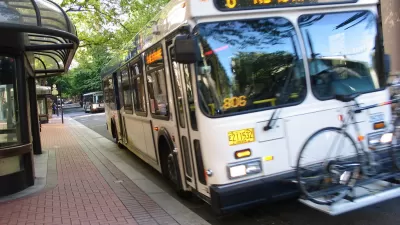To conduct a real life experiment with the theory, 17 of Lowell, MA's crime "hot spots" were cleaned up while another 17 were left alone. Researchers found a 20% dip in crime where conditions were improved.
"'In traditional policing, you went from call to call, and that was it - you're chasing your tail,' said Lowell patrol officer Karen Witts on a recent drive past a boarded up house that was once a bullet-pocked trouble spot. Now, she says, there appears to be a solid basis for a policing strategy that preemptively addresses the conditions that promote crime.
Many police departments across the country already use elements of the broken windows theory, or focus on crime hot spots. The Lowell experiment offers guidance on what seems to work best. Cleaning up the physical environment was very effective; misdemeanor arrests less so, and boosting social services had no apparent impact.
Such evidence-based policing is essential, argues David Weisburd, a professor of administration of justice at George Mason University. 'We demand it in fields like medicine,' Weisburd said. 'It seems to me with all the money we spend on policing, we better be able to see whether the programs have the effects we intend them to have.'
And this particular study, he said, is 'elegant' in how clearly it demonstrated crime prevention benefits."
FULL STORY: Breakthrough on 'broken windows'

Planetizen Federal Action Tracker
A weekly monitor of how Trump’s orders and actions are impacting planners and planning in America.

Map: Where Senate Republicans Want to Sell Your Public Lands
For public land advocates, the Senate Republicans’ proposal to sell millions of acres of public land in the West is “the biggest fight of their careers.”

Restaurant Patios Were a Pandemic Win — Why Were They so Hard to Keep?
Social distancing requirements and changes in travel patterns prompted cities to pilot new uses for street and sidewalk space. Then it got complicated.

Platform Pilsner: Vancouver Transit Agency Releases... a Beer?
TransLink will receive a portion of every sale of the four-pack.

Toronto Weighs Cheaper Transit, Parking Hikes for Major Events
Special event rates would take effect during large festivals, sports games and concerts to ‘discourage driving, manage congestion and free up space for transit.”

Berlin to Consider Car-Free Zone Larger Than Manhattan
The area bound by the 22-mile Ringbahn would still allow 12 uses of a private automobile per year per person, and several other exemptions.
Urban Design for Planners 1: Software Tools
This six-course series explores essential urban design concepts using open source software and equips planners with the tools they need to participate fully in the urban design process.
Planning for Universal Design
Learn the tools for implementing Universal Design in planning regulations.
Heyer Gruel & Associates PA
JM Goldson LLC
Custer County Colorado
City of Camden Redevelopment Agency
City of Astoria
Transportation Research & Education Center (TREC) at Portland State University
Camden Redevelopment Agency
City of Claremont
Municipality of Princeton (NJ)



























